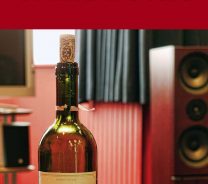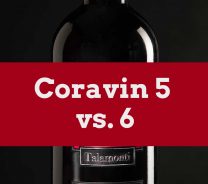What is Decanting Wine?
Last Updated on August 1st, 2023
Reader Disclosure Disclosure: We may earn commissions for purchases made through links on our site. Learn more on our about us page.Decanting wine is a process that originated in the 17th century. In those days, pouring wine into another container before serving was custom. Decanting wine is simply slowly pouring wine into a separate vessel. This process separates the wine from its sediments in the bottle, which will result in a more enjoyable wine. This has a plethora of benefits for consumers. And it has made itself a historical art form through the artisan crafts of winemaking and glass blowers.

Does decanting wine do anything?
Yes, decanting wine has many benefits for its consumers. When the decanting processes are complete, and the wine is ready to serve, you’ll find that a decanted wine will have a mild if no sulfite taste.
The notes, such as the flavors and aroma of the wine, will become more prominent after decanting. This is interesting due to the fact that wines differ from each other, offering different notes to create a signature flavor. Some consumers will even complete a double decanting process. Doing so creates new flavors within your favorite bottle of red.
What happens to wine when you decant it?
What are sediments? Sediment build-up in wine is made of dead yeast and preservatives from the wine itself. Let’s be clear. Sediments are not harmful to consume. They actually add body and flavor to the wine – they just don’t taste so great when you are actually ready to consume your wine.
When decanting wine, the sediments that build up in older red wines can be separated from the precious beverage itself. When you are decanting wine, you aren’t just releasing the wine from the sediments. You’re also exposing the wine to oxygen, changing and improving flavors depending on your personal preferences.
What wines benefit from decanting?
Wines that benefit the most from the decanting process fall under two specific qualifications. The first one is the type of wine. Red wines often will benefit most from the decanting process. This is because red wines typically have more sediment build-up than white wines. This is due to the fact that red wines contain more grape particles from the fermentation process. While white wines don’t necessarily have sediments, they do have a build-up called ‘white diamonds’ or tartrate crystals. These crystals are also completely harmless.
The second qualification age. Older wines, beginning above four to five years old, will benefit more from decanting processes. The older the wine, the more time the sediments it has built up. The older it is, it creates the more necessary reason to decant your wine. However, the cheap wine industry produces and designs its wine for consumers who are looking for a quick and easy alternative to wine. These wines do not typically need to be decanted, but you may if that is your preference.
What can I do with leftover decanted wine?
If you have a leftover decanted wine and want to save it for consumption over the next 3-4 days, you may simply use the double decanting method. Start by keeping the original wine bottle that the wine came in. Rinse it out thoroughly to remove any leftover sediments from the bottle. Once you have your clean wine bottle, you may decant your wine again by pouring it back into its original bottle and sealing it once again with your cork. Then, place it in your wine chiller or refrigerator until you’re ready to have another drink.
Some will often leave the leftover wine in the decanter and consume it over the next few days. This is not a good process because if the wine is exposed to oxygen for too long, the flavors and aroma will dilute completely. For example, if you open a carbonated beverage and leave it out overnight, you will notice that the beverage will become flat and unpleasant. The same thing goes for your wine. Sealing it will give it a few more days of shelf life.
When should you decant wine before drinking it?
This greatly depends on the age of your wine. Wines that are older than 15 years are very delicate and sensitive. If these older wines are exposed to oxygen for too long, they will quickly become flat and unpleasant. Therefore, older wines should always be decanted 30 minutes before serving for the best results.
However, wines that are younger than 15 years will require a longer duration of decanting before serving. This is because wines that tend to be younger are not as sensitive and can often withstand exposure to oxygen for a longer period. Therefore, the decanting process should be done an hour or more before your serving time for the best results.
What’s the difference between a wine decanter and an aerator?
A wine decanter is a glass vessel used in the decanting process to hold your decanted wine. There are beautiful pieces of blown glass you can purchase specifically for decanting. But, of course, they are typically more costly. Or you can simply use any glass vessel you have at home. You can easily use pitchers, mason jars, or glass bowls.
A wine aerator is used aside from the decanting process. There are plenty of wine aerators on the market that help to aerate your wine more quickly for your preferences in taste upon consumption. There’s typically no alternative to a wine aerator, but allowing your wine time in your decanter will aerate your wine (if you’re patient enough). The aerator simply just makes the process faster.
Summary
Decanting wine is a process that releases wine from the nasty sediments that build up in your wine. With the decanting process, you’ll notice improvements to the wine’s flavors and aromas. Leftover decanted wine can be sealed back into a clean bottle and corked for a later time after being stored in a wine cooler or a refrigerator. Older red wines will benefit most from the decanting process. An aerator and a decanter are not the same things. A decanter is a vessel used to hold decanted wine. An aerator is a device used to speed up the aeration process in the wine so that it doesn’t have to sit in a decanter for 30 minutes.


















